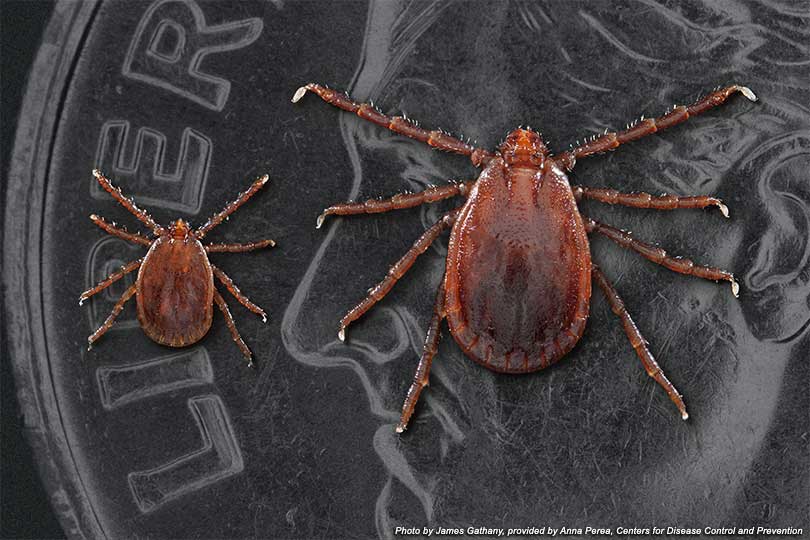By Jennifer Dorsett
Field Editor
The longhorned tick has been found in seven U.S. states, prompting a Texas entomologist to warn Texans about the possible arrival of this pest.
“This tick is a relative newcomer to the United States, and though it has not been confirmed here in Texas, it has been confirmed in Arkansas,” Dr. Sonja Swiger, Texas A&M AgriLife Extension Service veterinary/medical entomologist, said. “It’s not at all choosy about who or upon what mammal it feeds on or who it dines with, as it has been found feeding right alongside other external parasites.”
The longhorned tick gets its name for the distinctive “horns” sprouting from a portion of its head.
Swiger noted the tick isn’t a known carrier of Lyme disease, but it is a vector of several bacterial, viral and protozoan disease agents that affect both livestock and humans.
Originally from East Asia, the invasive pest is aggressive and infestations can build quickly. It is parthenogenetic, meaning males are not necessary for reproduction. One fed female tick can produce enough eggs to populate an entire colony.
“Their presence causes great stress to the animal, which translates to reduced growth and production and exsanguination, or serious blood loss,” she said.
The parasite, according to Swiger, is highly adaptable to a broad range of climates, from tropical areas to colder northern states such as New York and New Jersey, where the tick has successfully overwintered.
Unlike some other ticks, the longhorned tick requires three hosts to complete its life cycle. Potential hosts include, but are not limited to: cattle, white-tailed deer, horses, goats, sheep, dogs, cats, opossum, birds and raccoons.
Longhorned ticks are known in other countries to transmit livestock diseases including anaplasmosis and babesiosis, also called cattle fever, according to the U.S. Department of Agriculture.
“If historic record is any indication, once it arrives, it appears the longhorned tick is here to stay,” Swiger said. “But with diligence and management similar to that used with other tick species, serious trouble can be kept to a minimum.”
Swiger urges pet owners, ranchers and hunters to be vigilant and submit any suspicious ticks to the Texas Animal Health Commission’s State-Federal Laboratory using the instructions found here.
For more information on ticks and identification tools, visit http://tickapp.tamu.edu.

